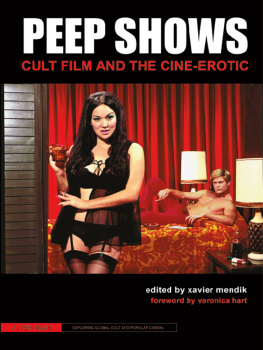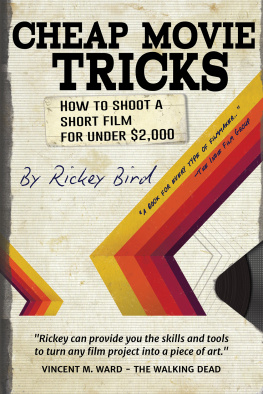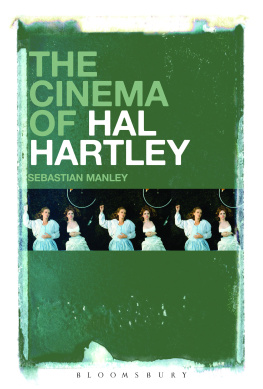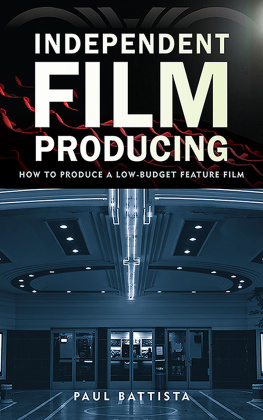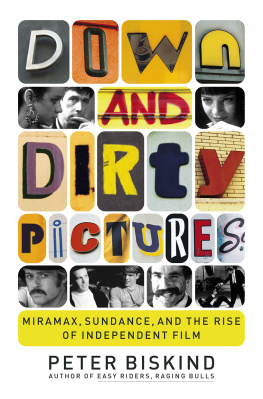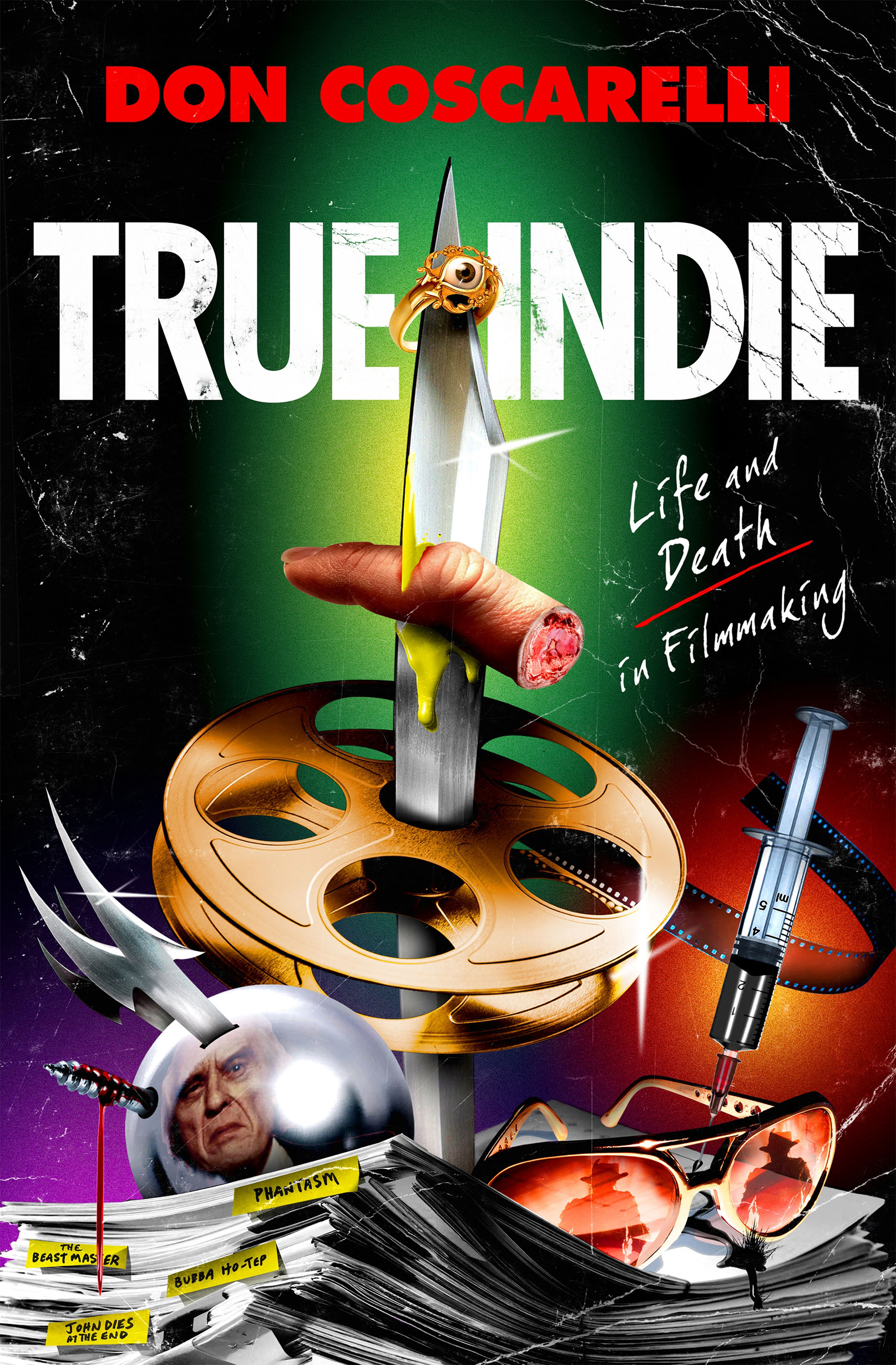Contents
Guide
Pagebreaks of the print version

The author and publisher have provided this e-book to you for your personal use only. You may not make this e-book publicly available in any way. Copyright infringement is against the law. If you believe the copy of this e-book you are reading infringes on the authors copyright, please notify the publisher at: us.macmillanusa.com/piracy.
This book is lovingly dedicated to my wife, Shelley, and my children, Andrew and Chloe.
It was my first car chase. Id grown up watching some great ones. The Mustang vs. the Charger in Bullitt . The Pontiac vs. the New York subway train in The French Connection . For me, it would be a 1971 Plymouth Cuda vs. a driverless 1968 Cadillac hearse. We had no stunt drivers, just some eager student filmmakers willing to drive from our crew. We had no city permits, but we did have a dead-end road out in the hills of Thousand Oaks, California, which we figured would be empty during our late-night shoot. Did I mention we would be blowing off a shotgun from the Cuda and crashing the hearse into a tree at the end of the chase? How the hell did I ever think Id be able to pull this scene off with no stunt team and no budget? This is how we made Phantasm . Welcome to indie filmmaking!
The traditional image idolizes the indie filmmaker as edgy, hip, and cool. Certainly once Quentin Tarantino burst onto the film scene in the early nineties, this image drew a huge flock of wannabes to the indie world. He made it look so damn easy. But all those wannabes quickly found out its not. Indie filmmaking is damn hard.
Making a no-budget indie film is like going to war. But youre not General MacArthur storming the beaches with a force of a hundred thousand soldiers. Instead, youre more like a small squad of Vietcong guerillas behind enemy lines, trying to complete an impossible mission using guile and your wits, the odds stacked against you. Its risky, difficult, and dangerous. I can swear to it. Ive been there.
In addition to writing and directing Phantasm, I also did the cinematography. I had no choice. We couldnt afford a thousand dollars a week for a low-budget director of photography. We could barely afford meals for our dedicated crew. My mom handled that. We sweet-talked camera purveyor Panavision into providing us a state-of-the-art Panaflex film camera package for peanuts. Lets make a movie!
To shoot that car chase required some serious risk taking, myself included. Most of the stunt driving was handled by our go-to camera grip on the show, George W. Singer Jr. He had no previous film experience but came on board my first film as a background extra, and never left. George was a surferfearless, compact, and hard-core.
We shot that Plymouth muscle car from every angle. Sometimes wed put the $75,000 Panaflex camera right on the centerline of the asphalt and George would race the Cuda straight at it, aiming for it, then swerve away at the last instant. It made for, as George would say, One bitchin shot!
We also hung that camera off the side of the speeding Plymouth for the actor close-ups. We had no camera mount, so we stole a food tray from a carhop drive-in restaurant. One of us would hang on to it during shots, hoping that flimsy little tray wouldnt break loose on the hairpin turns.
The challenge was filming that shotgun. When one of the actors pops up through the sunroof of the speeding Cuda and fires his twelve-gauge pump shotgun into that hearse, there was only one way to get the shot. I had to get in the cars trunk with that forty-pound Panaflex rig strapped to my shoulder while we raced along and actor Bill Thornbury fired the weapon point blank at me. Of course we were using blank cartridges. What we didnt know then, but what a well-known TV actor found out later and paid for with his life, was that those blank cartridges blow a lot of dangerous wadding and flaming debris out of the gun barrel at a high muzzle velocity. You certainly wouldnt want to be closer to a blank-loaded gun than about ten feet if it were aimed at you. Crammed in the trunk of our feature car, I was less than two feet away. Ignorance is bliss.
Common sense told me I needed some kind of protection. One of my loyal crew members, Roberto Quezada, would be crouched in the trunk beside me, with two jobsto read the light meter and to keep one hand on that Panaflex camera. There was no room in the trunk for a piece of transparent Plexiglas protection like they would have on a real movie. Wrapping me in a furniture pad wouldnt cut it: racing at high speed the wind would blow it right off. We got any aluminum foil?
My producer pal Paul Pepperman wrapped my head in aluminum foil as I put on my thick parka and zipped it up to my neck. Our camera assistant, Marc Schwartz, offered up his small camera pad and gaffer taped it over the left side of my face. The right side would be left bare: I had to look into the eyepiece and figured the Panaflex camera would protect my face. Marc slid a glass blank in over the lens to protect it from getting fried. At least the lens would be safe. We were ready to roll.
Bill was given the loaded pump shotgun. We only had four blank shells. We had just the one take to get the shot. George revved the engine, threw it in gear, and the muscle car took off. I yelled, Go! and, like an action star, Thornbury hurled off that sunroof, and as the wind whipped the thing by me, I was almost decapitated. Bill popped up, aimed the shotgun at camera and fired. BLAM, BLAM, BLAM, BLAM ! I have to admit I winced from the sound of the discharge, but witnessed several fiery blasts blow right by camera. We got the shot and I screamed, Cut, cut, cut!
George skidded the Cuda to a stop by our truck and Marc ran up and yanked the Panaflex away from me to safety. George leaped out of the drivers seat to help me and stopped dead in his tracks. Dude, your face is on fire.
My parents, Donald and Kate Coscarelli, bought their first home for nineteen thousand dollars in a massive new development on the northern tip of Orange County, California. When my family moved in, three thousand homes were under construction along with four new elementary schools in this huge subdivision called Rossmoor. The Korean War was over, war hero Ike Eisenhower was capably president, and it was several years before John Kennedy would be assassinated and several years more before Vietnam would define my generation. It was the late fifties: all the dads were gainfully employed, the moms had beautiful brand-new homes, and we kids had this seemingly perfect landscape to thrive and grow. This was where I grew up and the possibilities for the future appeared limitless.
I met my first best friend on the day I moved into the neighborhood when I was four years old. His name was Darwin Horn and he was bigger, stronger, and a year older. I was like a young Tom Sawyer to his Huck Finn and we did everything together. Rossmoor was our playground and we roamed that suburb far and wide. Everybody called him Little Dar, because his father had the same name. Little Dar and Big Dar. I looked up to Little Dar as he taught me a lot about boy things like fishing, stargazing, and skin diving, but I really looked up to Big Dar. He was unlike the other dads, because Big Dars day job was as a United States Secret Service agent. Decades later I would fondly memorialize both Little Dar and Big Dar in my films The Beastmaster and Kenny & Company respectively.






